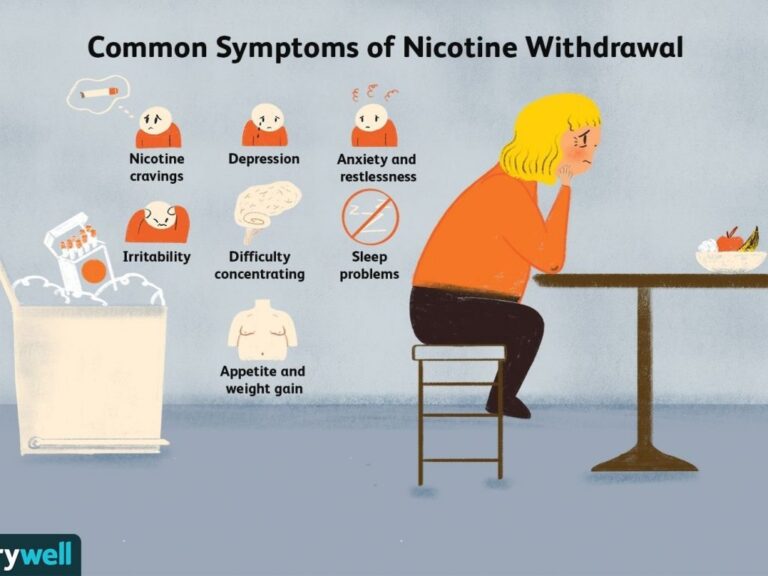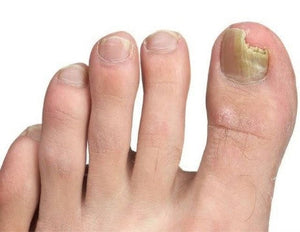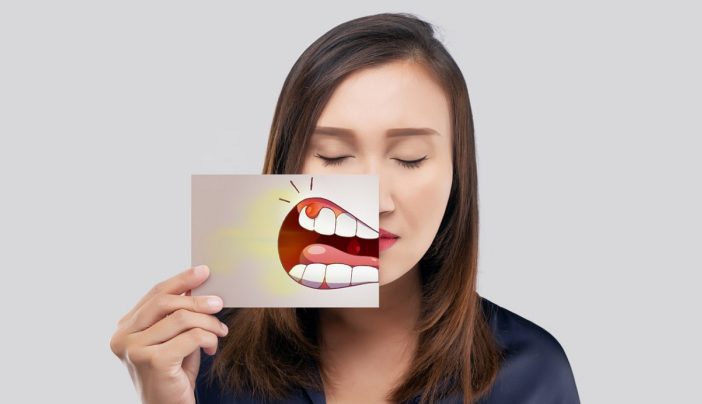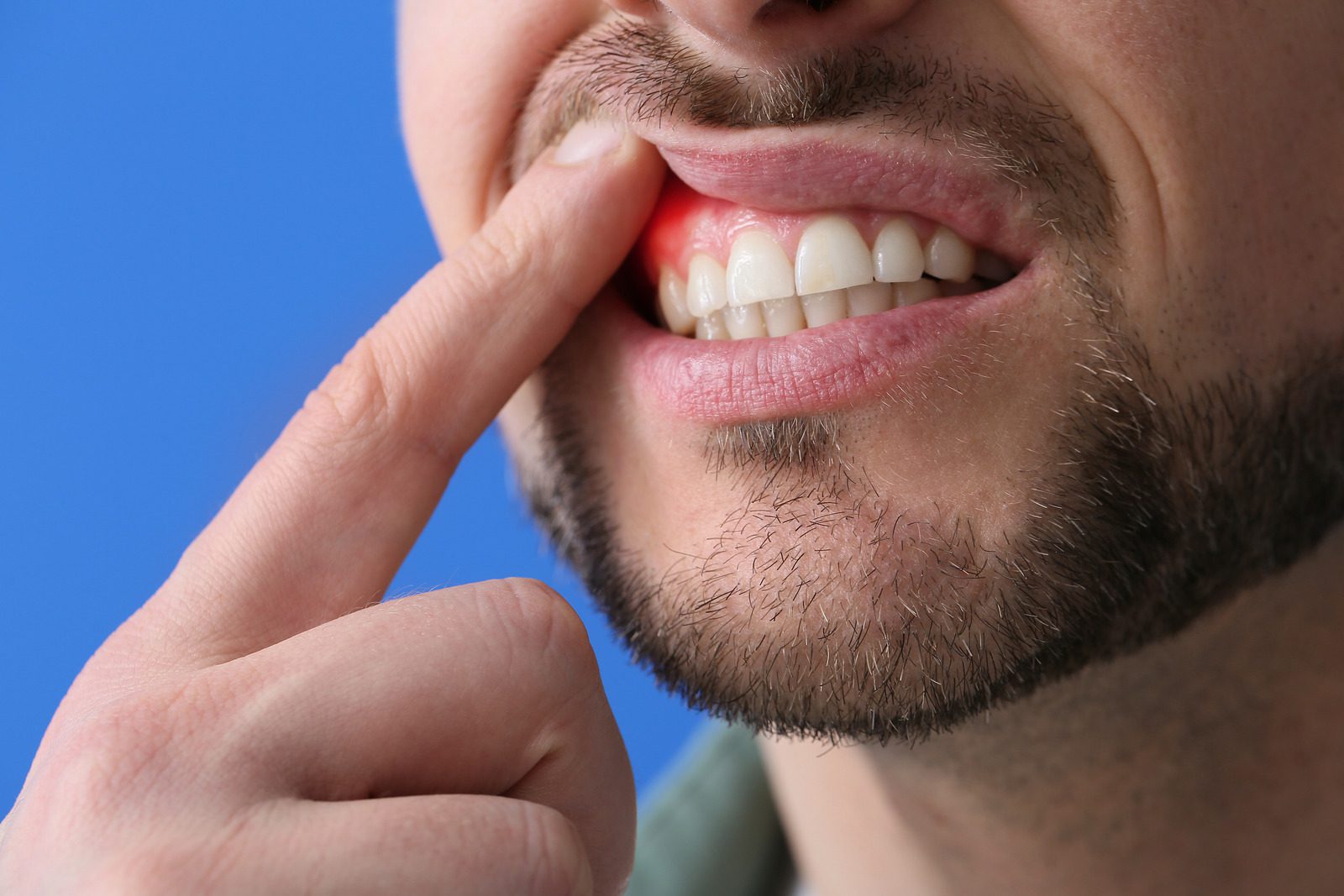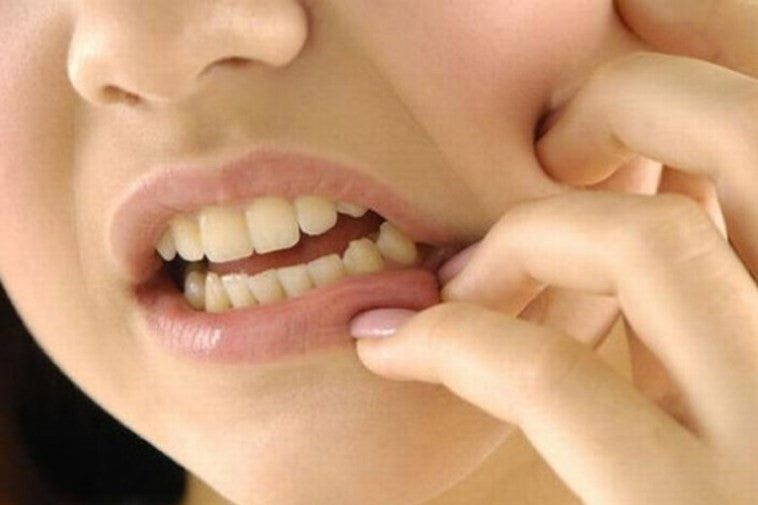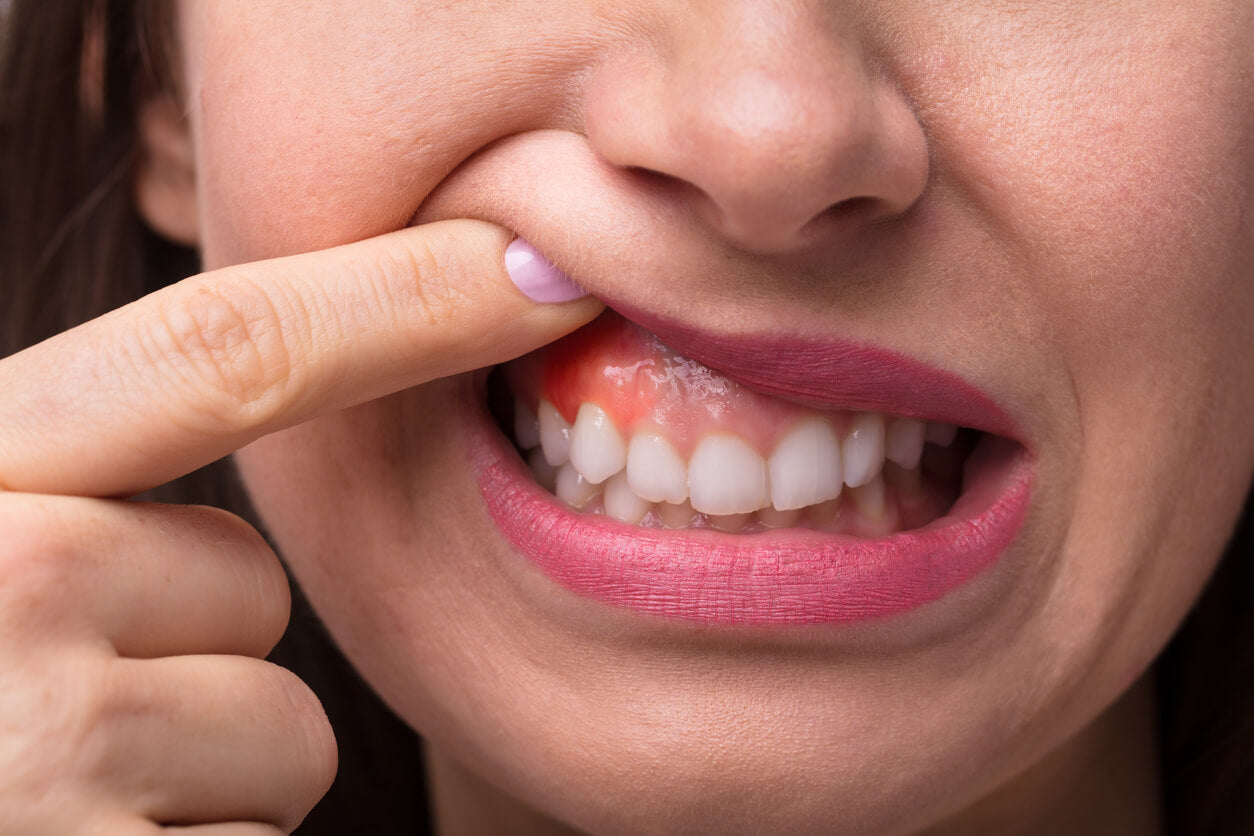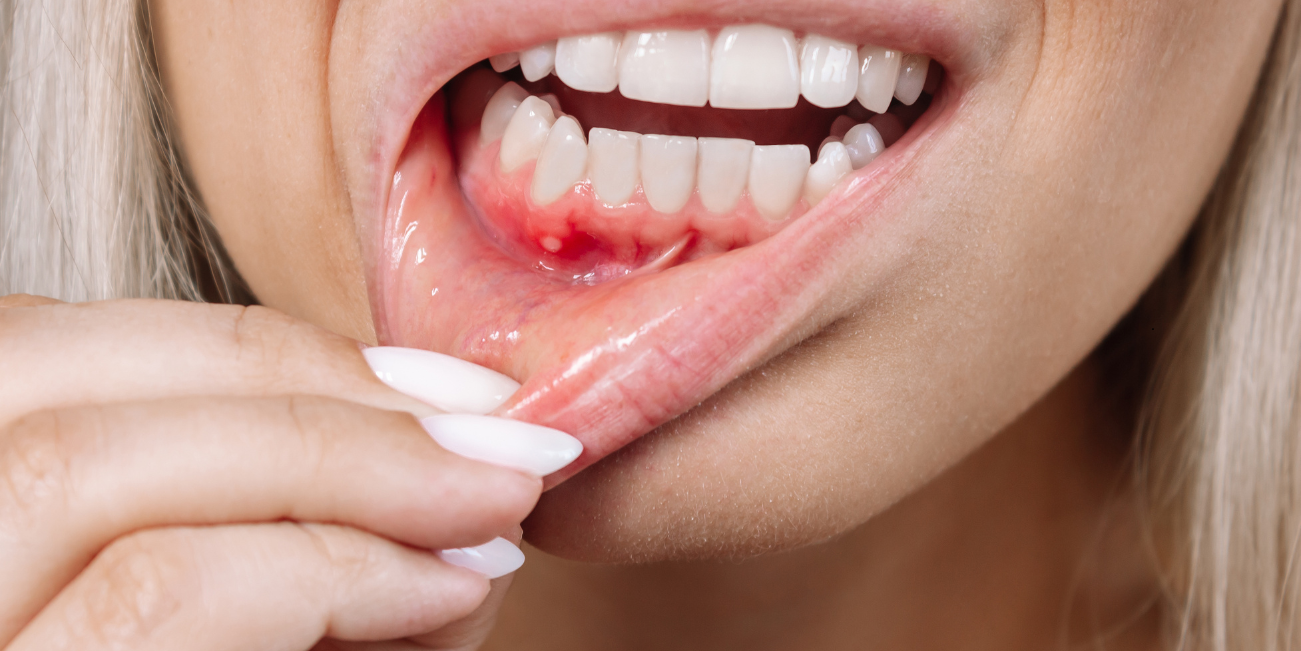Withdrawals and cravings are a set of symptoms that may become severe and present themselves as a reaction of your body or mind to a sudden change of routine. This change may be positive or negative, but it may have been forcing one to jump out of the box and try something different. There may be several types of withdrawal depending upon the consumption of substance creating withdrawal after stopping its use.
These withdrawals are not limited to such types but may contain several items of which we may include a few that can produce remarkable effects as withdrawal symptoms and cravings. Cravings may occur from certain foods, liquids, sweets, drugs, drugs of abuse, candies, types of juices, etc. We are taking into consideration some of the famous withdrawals and cravings, their symptoms and signs, their treatment methodologies, etc.
The Goodbye Company withdrawals and cravings help our customers to get rid of these withdrawals and cravings slowly by adjusting their bodies to the natural system after leaving these food or drug items. Some of the types of withdrawals are:
Types Of Withdrawals:
There are the following types of withdrawals that look slightly different from each other but still create a phase of uneasiness sometimes worse than that. These are:
- Nicotine withdrawal
- Opioid withdrawal
- Sugar withdrawal
- Caffeine withdrawal
- Alcohol withdrawal
- Codeine withdrawal
What Is A Nicotine Withdrawal?
Tobacco is associated with nicotine when we say that smoking causes addiction. It may affect you in a wide range of effects mainly on the brain such as:
- Mood-boosting activities
- Reducing depression and stress on a great level
- Reducing irritability and uneasiness
- Enhancing the short-term memory and concentration
- A sense of well-being is producing causing euphoria
- Decreasing appetite to a great extent
Alcohol, cocaine, morphine have the same addictive characteristics as depicted for nicotine. Along with nicotine, tobacco contains more than seventy carcinogens which all result in developing smoke-oriented diseases as heart disease, stroke and lung cancer, etc. Withdrawal of nicotine makes it more difficult to quit since the symptoms produced to make it impossible to get rid of its addictive effects.
Symptoms Of Nicotine Withdrawals :
Level of addiction and time duration are major determinants to assess the symptoms of nicotine withdrawal. How long you have been taking tobacco and how much tobacco has filled up the nicotinic receptors of your brain and skeletal muscles determines the severity of the symptoms of nicotine withdrawal. The symptoms of nicotine withdrawal are:

- Cravings in your mouth and body for nicotine
- Hands and feet may have a tingling sensation
- Excess sweating
- Abdominal cramps, nausea, and illicit feelings
- Gastric feelings and constipation
- Cough and shortness of breath
- Sore throat and sour eructations.
- Insomnia partial or complete
- Difficulty concentrating mentally as well as physically
- Feelings of anxiety and uneasiness
- General irritability
- Extreme depression and mental exhaustion
- Irrelevant weight gain
For people who chew tobacco the symptoms of withdrawl are similar to the ones using any other dosage form. These include:
- Mood feels depressed
- Irregular sleep patterns
- Feels difficult to concentrate
- Restless and jumpy feeling
- Uneasy and irritable
- Weight gain and enhanced appetite
- Bradycardia
The withdrawal symptoms of nicotine reach a peak within two to three days. Nicotine has its receptors in the brain which are increased in response to the multiple uses of nicotine repeatedly. These receptors upregulation make you crave for use of more nicotine and thus nicotine smoking. Paying least attention to these receptors creates withdrawal receptors. If you make your resistance level high and try to resist that craving for nicotine then withdrawal symptoms go away in two to four weeks themselves. Few of the patients suffer from withdrawal symptoms for a few to several months.
Strategies For Treatment Of Nicotine Withdrawal:
Nicotine is being considered addictive for the brain as well as skeletal receptors. It should always be used if necessary, with special care and precautionary measures not to let it become a habit and a craving for your health. You will have to visit a doctor to get rid of the cravings and to combat the effects of nicotine withdrawals.
Over-the-counter nicotine replacement medications:
Normally you cannot replace anything with nicotine if you are suffering from its withdrawal. Even then few alternative medications are available which may provide a touch of nicotine to end the craving slowly and ultimately to slowly reduce the symptoms of nicotine withdrawal, that is nicotine chewing gum and nicotine skin patches.
Prescription nicotine replacement medications:
If over-the-counter products are not compensating for the removal of nicotine withdrawal symptoms then doctors or physicians may prescribe the prescription medicines for you. These may include inhalers and nasal sprays. These may be used as an alternative therapy to compensate for the cravings and withdrawals of excessive nicotine uptake. Some non-nicotine prescription medications are used as an alternative such as bupropion and varenicline. These don\’t contain nicotine at all and they help the body to fight against the nicotine withdrawal symptoms and reduce the cravings that may have become difficult or impossible to get rid of by using these non-nicotine prescription medications.
These nicotine replacement therapies (NRT) products are helpful in certain cases of less severity to get the normal routine back but they are not cured at all. If you have some emotional feelings and connection with smoking, then it becomes quite difficult to get that reversed.
Some pros and cons of NRT products:
Nicotine replacement therapy products are very popular among those who want to get rid of the withdrawal symptoms but at the same time, they may experience some side effects of these products. These may be:
- Sleeping patterns disorder
- Nausea and vomit like feelings
- Headaches and vertigo
Nicotine replacement therapies are used for such patients successfully but few may face heart attacks by using a nicotine patch and smoking at the same time since the increased nicotine from both sources may enhance the blood pressure to a significant level.
Quitting old turkey:
More than ten cigarettes a day make nicotine replacement therapy be used to quit smoking withdrawals. Smoking only ten or fewer cigarettes per day provides you with another option, which is to quit turkey. Such a technique imparts quitting of nicotine uses without the use of nicotine replacements. Although the withdrawal symptoms are quite strong not allowing you to get rid of the symptoms, a strategic plan can help you to get through the rough patch of withdrawal symptoms. Try to follow the tips:
- Always go for the date to stop smoking. It will work ideally for you when you don\’t have too many on your calendar.
- Try to find out and note down your reasons for quitting smoking.
- Withdrawal symptoms are only temporary and will finish one day, remind yourself every day.
- Take support from friends and family.
- Join any group for support, either physically or on the internet to observe a smoking cessation program to increase your chance of success.
Complications associated with nicotinic withdrawal:
Although nicotinic withdrawal is not a life-threatening situation, still physical and mental changes may occur once you quit smoking.
Increased appetite and weight gain:
Taste buds and sense of smell return to normal once you quit smoking. Although it’s a positive side effect, you may notice that you crave food more often than you did before you began smoking. Some people crave more fats and sugar, some crave other foods, even if they didn\’t carve these foods before smoking. You may follow certain tips to manage your cravings and minimize the weight gain:
Food cravings:
Try to delay your cravings for a few minutes, then drink a glass of water, distract yourself with something unusual, or practice deep breathing, these are the four Ds that may help you to reduce food cravings.
- Fresh healthy snack food such as carrots, raw nuts, or low-fat yoghurt.
- Use a toothpick or straw to keep your hands and mouth busy.
- Enjoy the flavors of your food by eating slowly.
- Watch television while eating to avoid distractions.
- Walking daily at a particular time may help you manage your weight.
Mental Health Changes:
Mental health issues may occur in certain people. A relapse may occur in people who have had episodes of depression. It may also be experienced by people who may have had bipolar disorder or other substance use disorders.
Nicotine withdrawal may cause a depression that is always temporary. Sometimes depression may become life-threatening but it is treatable often.
Nicotine withdrawal can be prevented or not?:
You may have to manage several symptoms while preventing nicotine withdrawal. These symptoms may check your tolerance to a deeper level but you may adopt some lifestyle changes to prevent the alarming symptoms.
Dry mouth and sore throat:
Drink more than 10 glasses of water per day, chew sugar-free gum, or suck on sugar-free candy.
Headaches:
Take a frequent bath or practice deep breathing exercises. You may use over-the-counter pain medications and treatments, like ibuprofen and paracetamol.
Difficulty sleeping:
Try to maintain a healthy sleeping pattern by putting away all electronic devices before bedtime. These include reading, writing, mobile, etc. Take a warm bath or herbal tea or warm milk and avoid caffeine or heavy meals before bed.
Difficulty concentrating:
Always take a break while working. Make to-do lists by taking frequent breaks and help yourself by giving plenty of time to complete tasks.
Overcoming Nicotine Withdrawals?:
The most difficult part of quitting smoking is overcoming nicotine withdrawal. Most people try more than once to quit. It is more likely to work directly proportionally, as the more you like to quit the more you will succeed.
Several situations may trigger your desire to smoke that act as a trigger against overcoming nicotine withdrawal. These situations can act as a trigger to intensify the symptoms of nicotine withdrawal. These triggers include:
- When you are surrounded by other smoker friends and buddies.
- To be in the car for long.
- To feel stress and remain under stress for long.
- To drink coffee or tea.
- To feel bored for long.
- Drinking alcohol for a long time.
- To remain on phone for a long.
You must identify your triggers and try to avoid them at your maximum. Generally, the nicotine withdrawal symptoms may pass quickly mostly within a week. You may still experience long-term cravings for tobacco even when the withdrawal symptoms stop. Long-term success will be granted by curbing these cravings.
By avoiding triggers and engaging in moderate physical activity and participating in deep breathing exercises many people can manage their cravings. We must find relaxing ways to curb cravings by avoiding triggers such as:
- Must listen to soothing music.
- Must participate in a delightful hobby.
- Must take a relaxing walk.
- Must talk with family and friends.
- Must use carrots, gums, or hard candies for cigarettes.
What Is Opioid Withdrawal?
Recovery is secondary only to the withdrawal symptoms of someone suffering from opioid addiction. People still need to stay drug-free even after the worst symptoms of withdrawal are over. Methadone, buprenorphine, and other similar drugs of choice help from this step onwards as maintenance treatments. These are known as opioid agonists, i.e. the drugs that activate the same receptors in the brain as other opioids do.

These receptors include oxycodone, hydrocodone, etc. These are also known as once-a-day medications. If these drugs are administered carefully following a proper dose and dosage regimen then they reduce the cravings for the use of other opioids. A newer class of drugs known as the opioid antagonist is a medication that blocks the opioid receptors completely, thereby imparting equally beneficial effects. It may only require a monthly injection to serve the purpose.
Opioid Withdrawal Treatment: Similar To Daily Treatment:
Toenail fungus may initially look nothing and over time, you may notice some severity in the symptoms. A visit to your physician may become a necessity. Your doctor or physician may examine your nails properly. The doctor may take your nail clippings to sort out the real causative bacteria or scrape debris from under your nail and send the sample to a lab to identify the type of fungus causing the infection.
Naltrexone blocks opioid receptors to keep opioids from binding. This helps to tamp down on the euphoria or high that people get when they use opioids frequently. This blocking of receptors makes drug use less rewarding. A person’s risk of overdosing reduces when they are tempted to use opioids.
Detox first, followed by maintenance:
You must try to detox the body first to make the drug\’s effects finish and then may maintain it. A monthly injection may make it easy for people to stick with their medication. Compliance goes up significantly if you just have to take a shot once a month and that\’s true in every area of medicine. Extended-release naltrexone also comes with its downsides like all other medications. If a person taking naltrexone is still physically addicted to opioids then one of the downsides may be sudden withdrawal symptoms.
You must go through a detox and may show no evidence of physical dependence on opiates to be transitioned onto naltrexone. Several ways can be adapted to detox the body to undergo supervised withdrawal. Using lower and lower doses of buprenorphine-naloxone or using ibuprofen or other medications may reduce withdrawal symptoms. There is a basic need for strict detoxification before initiating naltrexone since it may not work for everyone. Most people continue for opiates since they cannot tolerate the cravings and withdrawals. Methadone and buprenorphine can help these patients to control cravings so that they can move forward. Such patients may use counseling services and other things that are provided to them to get their life back to order.
Having treatment choices is best:
Treatment choices may be used to counteract the effects of withdrawals and cravings. Few people taking methadone may choose not to taper because of withdrawal or fear of relapsing. So they consider methadone as the best option. Everyone is different physically and physiologically so options for opioid addiction are very important. We always need choices in medicine that\’s why we have to figure out the right medication for every patient. These drugs do not work in isolation rather it\’s medication-assisted treatment. The medication helps the cravings to quiet down for long and relapse risks to go away but not entirely, rather only to go down. People use counseling services as an aide who is using any of these medications. They can receive psychiatric care for other mental illnesses or may enroll in a twelve-step program. All these things serve for a better recovery and help to sustain the recovery for longer.
What Is Sugar Withdrawal?
Sugar equally affects the reward system of the brain as do the addictive drugs, either nicotine or alcohol. The reward system of the brain is dominated by dopamine, the inhibitory neurotransmitter that is a great human survivor but at the same time, it creates addiction by imparting euphoria and relaxation. A natural reward blessed to all humans and living things is food that keeps you alive, healthy and energetic, so sugar or sweet food and sweet drinks stimulate the reward system of the brain caus8ign you craving to eat the same food again and again. The most common food associated with addiction causing symptoms are added fats or added sugars in food.
Addictive drugs stimulate the nucleus accumbens, an area of the central nervous system that stimulates the release of the inhibitory neurotransmitter, dopamine and a similar mechanism is being followed by sugars, thus causing addiction. Endogenous opioids in the brain are also released by the brain due to sugar-caused stimulation and thus may create further cravings. The generally recommended amount of sugar that may not cause addiction in a normal situation is about twenty-four grams or six teaspoonfuls for females while almost thirty-six grams or nine teaspoonfuls for males. A daily diet plan with high sugar content if suddenly reduced to a limited amount may cause withdrawal and unpleasant symptoms.
Symptoms Of Cutting Added Sugar From Your Daily Diet:
Physical, as well as mental symptoms, may appear by cutting added sugar in your diet. It gives a different experience for everyone to give up on added sugars. The developed symptoms and their severity will be dependent on the amount of sugar that you were taking in through sweetened beverages and foods. The symptoms may last from a few days to a couple of weeks for some people and may linger on for months for some others. Your body can easily adapt to the amount of sugar you take, either more or less and the same would be the intensity of the cravings and withdrawal symptoms when you want to cut down further few more calories. Symptoms may worsen at certain times of the day as between meals etc. or during stressful times.
Mental Symptoms:
From your diet, when you cut down sugar, several mental and emotional symptoms may appear including:
- Depressed mood:
A partial decrease in dopamine release by cutting down sugar from your diet may cause depressed moods and feelings.
Anxiousness and nervousness along with irritability may accompany you when you have less patience than usual and are on edge.
- Changes in sleep patterns:
When detoxing from sugars, some people experience changes in their sleep. You may find it hard to stay asleep through the night or at the first point may find it difficult to stay asleep if you get to sleep initially.
- Issues of cognition:
After quitting sugar, you may find it difficult to concentrate and this may result in your mental disabilities as forgetfulness and making it hard to focus on tasks or work or school, or others.
- Cravings of other foods:
You may find cravings for other food items such as carbohydrates as pasta, bread, and potato chips, etc.
Physical Symptoms:
Physically you may feel run down when you give up sugar either get a headache or vertigo. Other possible symptoms may include:
- Dizziness or light-headedness
- Fatigue and tiredness
- Nausea and vomit
Tips For Cutting Back On Added Sugar:
You need to take time to reduce your reliance on added sugar if you are used to regular eating of sugary foods like cake, ice creams, candies, cookies, and sweetened breakfast cereals. Everyone behaves on their while cutting sugar from their diet, some people find it easy and others feel it quite difficult. Even making small changes to your sugar intake may significantly change your overall health. Following a strict diet plan to slowly reduce your sugar intake may help you to overcome the disastrous side effects of sugar withdrawal. These tips may include:
- Cut down sweetened drinks for water: Replace all the sugary soda, energy drinks, and fruit juices with plain or sparkling water. Add some mint or slices of lemon or lime if you need a boost of flavor.
- Initiating day with low sugary way: Fuel your body with a protein and fiber-rich omelet made with fresh and healthy veggies including fresh berries and avocado instead of that colorful box of sugary cereal or a frosted doughnut.
- Labels of the products are basics: Always take a deep look at the products label like salad dressings, barbecue sauce, marinara sauce, oatmeal packs to scan them for added sugar since many foods and condiments are sneaky sources of added sugars.
- Prefer unsweetened snacks: Whenever you feel the need to refuel, always prefer whole, nutrient-dense snacks like nuts and seeds, nut butter and whole fruit, veggies, and hums instead of granola or protein bar packed with added sugar.
- Strict licking on desserts: If you feel hungry then reach out for something high in protein and healthy fat like unsweetened Greek yoghurt with berries or a handful of macadamia nuts and unsweetened coconut instead of lurking around your favorite pint of ice cream or go-to-candy bar after dinner. Keep a deep check on desserts.
- A whole diet is a great blessing: Always focus on unprocessed food like fruits, nuts, seeds, eggs, poultry, seafood, and vegetables since optimizing the nutrient density of your overall diet may help to improve your health and make a great backup for you when you want to cut down on sugar.
Managing Side Effects:
Below are given some of the tips you may follow to manage the side effects of sugar withdrawal, that occur by cutting sugar out of your diet.
- Be realistic about your approaches: Not all people need to get benefits by cutting down sugar totally, some people may get relief by reducing or cutting at least one source of added sugar at one time. For example, some people may get benefit by cutting down only sweets after every meal, that was their favorite hobby to have. Many detoxes are available in the market that may involve cutting all the added sugar sources from your diet at a specific time. So to help yourself cut down slowly all added sugars by eliminating one at a time.
- Protein-rich food intake: During your sugar detox, try to add protein to every meal to compensate for low energy levels and to avoid hunger. Eating protein may promote a fullness feeling that may help you to manage your cravings. It will aid you to void the temptation to reach for your favorite pastry or other sugar sources. Sources of protein-rich food are beans, eggs, nuts, legumes, and fatty fish.
- Enhanced dietary fiber intake: Fiber-rich foods help you to avoid hunger and cravings. These fibrous foods take longer to digest and thus make you feel full for a long time. Healthy blood sugar regulation is the major benefit of high fibrous food which helps to keep a big check on your cravings. Legumes, beans, high-fiber vegetables are great sources of such foods. Broccoli mixed into eggs, spooning pumpkin seeds over your oatmeal are the best examples of mixtures of high fiber veggies and highly proteinaceous foods.
- Keep yourself hydrated: Staying hydrated optimally may help you manage your sugar cravings and for overall health too. Water must be made essentiality of life rather than energy drinks or sodas. Sugary beverage reduction too helps to reduce sugar cravings. Bowel movements are managed easily by taking in plenty of water especially when you have a high fiber diet.
- Cut down artificial sweeteners: Sugar may be swapped for artificial sweeteners since certain artificial sweeteners lead to metabolic changes that may increase food intake, weight gain, and cravings. The best way to cut added sugar from your diet is to reduce your intake of sweet foods.
- Managing your stress levels: Stress increases cravings for sweet foods and affects food preferences. Sugar has a calming effect on stress hormones that may contribute to your desire for sugar when feeling stressed. Talking to a friend, reading a book, watching your favorite tv show, or taking a short walk may help you to relax and stay away from stress.
- Regular exercise: Regular exercise must be a part of your daily life but in the case of cutting down sugars, it is necessary to maintain a routine of exercise. Exercise may help to reduce stress and increase energy which may help to combat symptoms like low energy levels, fatigue, stress-induced cravings that will decrease your added sugar intake. A short break or brisk walk of fifteen minutes or short bouts of exercise may reduce cravings for sugary foods.
- Overall diet quality: Cravings for healthier foods can be enhanced and sugary foods can be minimized by using overall healthy food quality and diet plan. You must increase your intake of nutrient-dense foods like fish, vegetables, whole fruits, and beans rather than your favorite candies and ice creams. This may reduce your reliance on added sugar and may prevent you from wrong cravings.
- Enough sleep with correct sleep patterns: Fatigue, cravings, and low mood which are the symptoms of sugar withdrawal may worsen if you spoil your sleeping habits along with. Your cravings for sugar and unhealthy foods may be enhanced by improper sleep. The appetite-regulating hormones and satiety center that is dependent upon proper food intake may get alterations by sleep deprivations and your cravings for highly palatable foods may enhance. A great sleep may make you choose healthier food, decrease your stress levels, improve your memory and concentration. You must avoid daytime napping for a healthy good night\’s sleep.
- Bitter food-a a good distracting: Bitter foods have a strong impact on brain receptors related to a craving for sugary foods so taking something bitter may abandon your cravings for sweets to a greater extent. You can choose bitter foods or make your own as coffee arugula, broccoli raab, and coffee, etc.
- Strong willpower and motivation: If your diet has been on heavy sugars then it becomes a bit difficult to stop and refrain from it. Always remind yourself of your sacrifice to stop cravings and get the idea of your motivational spirit, keep it high whenever you want to get back to the sugary food again. Keep yourself prepared with water and protein snacks or keep yourself busy to compensate for your cravings.
What Is Caffeine Withdrawal?
Adenosine receptors of the brain are blocked by a psychoactive stimulant that is caffeine which reduces drowsiness and imparts activeness at a large scale to its consumer. The body\’s sleep-wake processes are connected to a neurotransmitter that is adenosine. Caffeine works by blocking the receptor and allowing a person for a temporary improved feeling of weakness. Caffeine may act on other hormones and neurotransmitters of the brain like dopamine and adrenaline and it may constrict blood flow to the brain too. By leaving caffeine all of a sudden, the brain has to work to adjust to functioning without caffeine boosted reward system. Fortunately, the withdrawal symptoms created by the caffeine do not prolong and stay relatively mild.
Although the duration of caffeine withdrawal symptoms may vary greatly from person to person and also depending upon the coffee consumption per day, still caffeine withdrawal may sustain only for two to nine days approximately. Abrupt cessation of caffeine intake after regular use may create withdrawal effects between twelve to twenty-four hours at its maximum after stopping. Peak effects may occur between twelve to fifty-one hours. General approval for coffee is, the more you take, the worse you experience withdrawal symptoms. Habitual consumption of just a small cup of coffee per day may produce withdrawal symptoms and that is the worst scenario.
Symptoms And Signs Of Caffeine Withdrawals :
Anyone who regularly uses caffeine can become addicted and then the withdrawal symptoms may pressurize you to continue. The most common signs and symptoms of caffeine withdrawals are:
Headaches:
One of the most common reported symptoms of caffeine withdrawal is a headache since the blood vessels of the brain are constricted due to caffeine which results in slow blood flow. Cerebral blood flow can be decreased by twenty-seven percent just two hundred and fifty milligrams of caffeine. Once the caffeine has caused constriction in the blood vessels of the brain, then the reduction or stoppage of the intake of coffee may open up and increase the blood flow to the brain. Such an abrupt change in blood flow may cause irreversible headaches with versatile severity and frequency that are quite difficult to overcome. Slowly brain adapts to the changes and it subsides. If you get a headache by chance then caffeine intake may stop that headache taken once and it can treat certain types of migraines too.
Fatigue:
Caffeine in the form of coffee or strong tea or direct caffeine gives an energy boost to many people who consume it to stay awakened and energetic. Caffeine blocks the receptors for adenosine, a neurotransmitter that can make you feel drowsy so blocking this neurotransmitter keeps you alert and active. This is the reason for its proven efficiency for reducing chronic fatigue, enhancing athletic performances, and improved energy. If you eliminate caffeine from your diet suddenly then it may have the opposite effects creating drowsiness and fatigue. Abstaining from caffeine for more than sixteen hours for habitual consumers of caffeine causes increased fatigue feelings. To maintain the same level of alertness, one has to consume a cup of coffee every four to six hours since it may have its energizing effects on your body for only about this much time. It may lead to excessive intake and dependence on caffeine which can ultimately make withdrawal symptoms worse.
Anxiety:
One cup of coffee can stimulate jittery and anxious feelings since it is a stimulant that enhances heart rate, stress hormones, cortisol, and epinephrine as well as boosts blood pressure. If consumption of coffee can give anxiousness then cutting it out may have side effects of equal intensity. The body becomes physically and mentally dependent on the coffee causing anxiety feelings thus worsening it while suffering from caffeine withdrawal. If you are habitual to take caffeine in soda form or sugar-sweetened coffee then you would suffer from the double-dip of withdrawal since the sudden reduction in caffeine and sugar may worsen anxiety even more.
Difficulty in concentration:
Boosting concentration and remaining alert is the major concern for coffee consumers to take coffee or caffeine in the form of tea, energy drinks, or coffee at the first hand. Generally, before any presentations, competitions, or athletic performances, caffeinated beverages are consumed for their positive effects to improve focus. Adrenaline is produced by the adrenal portion of the kidneys as a body\’s normal reaction to stress and during caffeine intake, the level of adrenaline rises. It further helps to boost the excitatory neurotransmitters like norepinephrine and dopamine. All these reactions may cause overall increased heart rate and blood pressure, enhanced alertness, and improved focus along with stimulated brain capacities. Quitting caffeine may indulge your body in a struggling phase against the norms and may impart negative consequences to your body.
Mood depression:
With its ability to block adenosine, caffeine may boost the general mood of the consumer. Consumption of caffeine of almost 0.68 milligrams per pound of body weight may work to enhance the mood to a higher level as compared to a placebo. Since caffeine in the form of coffee or tea or energy drinks may stimulate the general feeling of well-being and may increase energy so it was proved to reduce depression risks and phases in women who consumed almost four or more cups of coffee per day. All this stimulation and energy is vanished off when you stop taking it giving you the symptom of mood depression, a withdrawal symptom.
Irritability:
Irritability in the people who are regular coffee drinkers before their morning joe is the caffeine in coffee that urges their mood. Withdrawal symptoms are as quick to occur as, within six to eight hours, the gap in between two intakes of coffee cups and this may provoke irritability in these people as caffeine can stay only for six hours in our system. Most of the population becomes handy in their decision to withdraw from caffeine consumption due to the irritability and mood swings they and their companions have to suffer each time they decide for a block.
Tremors:
Tremors are not common but a rare side effect of caffeine withdrawal after serious dependency on caffeine for a longer period. Since it is a central nervous system stimulant so the withdrawal of caffeine from too much intake would create a severe form of anxiety and jittery feelings as well as shaky hands telling stories of extreme withdrawal symptoms. Typical withdrawal symptom from taking large amounts of coffee occurs in hands and may last for two to nine days.
Low energy levels:
Poor sleeping habits, demanding jobs, timing shortages, children, unhealthy diets, and other lifestyle factors drain energy causing many people to use alternate measures to take high energy levels to cope up with all stress factors. They try to revive their energies by taking coffee and tea or other energy drinks. These caffeinated beverages provide them with a boost of energy they need and the demand increases day by day. A cup of energy drink or a cup of coffee increases the heart rate and blood sugar level providing increased mental and physical energy. These effects once created cause the increase in desire for more energy and thus caffeine intake. So eliminating or reducing caffeine causes significantly low energy levels.
How To Overcome Caffeine Withdrawal Symptoms:
Peak intensity of caffeine withdrawal symptoms occurs twenty-four to fifty-one hours after cutting out caffeine covering for full symptoms between two and nine days. These symptoms are not for long but are very uncomfortable and tiring making your life difficult. We have certain ways to reduce the chances of experiencing these unpleasant side-effects by changing lifestyles and following certain useful tips. These tips may be:
- Cut back slowly:
Withdrawal symptoms worsen by quitting old turkey. Unpleasant side effects can be reduced by generally weaning off caffeine.
- Reduction of caffeinated beverages:
Reduce your dependence not abruptly but by start drinking half-decaf, half regular coffee if you are used to drinking full-strength coffee. To be on the better side, you must swap one of your coffees for a decaf herbal tea.
- Must stay hydrated:
When trying to cut down caffeine, taking in enough water is crucial for the health of the consumer. Withdrawal symptoms as fatigue and headache may worsen the state of dehydration.
- Proper sleep pattern and ease of sleep:
At least nine hours per night of sleep is necessary to combat fatigue and irritation starting as the withdrawal symptom of cutting out caffeine.
- Try to boost energy naturally:
Try to incorporate natural sources of energy like exercise, stress reduction techniques into your routine if your energy levels have taken a hit after giving up caffeine.
What Is Alcohol Withdrawal?
Alcohol is a chemical that may cause severe withdrawal symptoms after leaving it either all of a sudden or slowly. The detoxification time is dependent upon various factors as how long you have been drinking, how much you drink at one time, you have ever tried to detox before or not, you are taking how much pure alcohol, etc. Alcohol withdrawal symptoms follow a proper timeline in the sense that how quickly or slowly the withdrawal symptoms go off. After your last drink, almost six hours is the minimum time when you start feeling minor withdrawal symptoms. Heavy history of drinking may make you suffer from seizures in less than six hours after quitting drinking. Some people may suffer from hallucinations within twelve to twenty-four hours after stopping the alcohol and as a withdrawal symptom, hallucination may follow. Such patients may hear or see things that are not present actually.
Minor withdrawal symptoms may continue within twenty-four to forty-eight hours during the quitting time. These symptoms may include tremors, upset gastrointestinal symptoms, and headaches including slight vertigo. The withdrawal symptoms after reaching a peak level in eighteen to twenty-four hours start declining in the next four to five days if the person goes through only mild withdrawal. Alcohol withdrawal delirium or delirium tremens (DTs), a severe form of alcohol withdrawal is experienced by certain people who have decreased resistance power. Such people may suffer from seizures, high body temperature, or tachycardia. The worst scenario comes when withdrawal symptoms last longer than seventy-two hours with unusually rapid heart rate and illusions.
Symptoms Of Alcohol Withdrawal
The signs and symptoms of alcohol withdrawal may appear from six hours to a few days after your last drink. These symptoms may include two of the followings:
- Anxiety may appear as a real demon until you either take some relaxant or try to take alcohol again.
- Tremors that may utter spontaneously.
- Nausea, either an empty stomach or by looking at the sight of food.
- Headache that may become continuous and make you take long rest.
- Sweating may occur due to the ecstasy of withdrawal.
- Irritability and confusion may follow due to mental blockage.
- Insomnia occurs to counteract the continuous habit of alcohol intake.
- Nightmares associate with sleep and when awaken too.
- Blood pressure may rise as a bigger withdrawal symptom.
All of these symptoms may worsen over two to three days and some milder symptoms may persist for weeks in some people. Out of all these, the severe most symptom may be delirium tremens (DT). The signs and symptoms of this worsened state of alcohol withdrawal include extreme agitation, confusion, fever, tactile hallucinations (sense of burning, itching, or numbness) and seizures, auditory hallucinations, visual hallucinations, etc.
treatment for AWS depends on how severe your symptoms are. Some people can be treated at home, but others may need supervised care in a hospital setting to avoid potentially dangerous complications such as seizures.
Treatment Of Alcohol Withdrawal
Alcohol withdrawal may be treated by managing your symptoms at the most and keeping yourself calm. You can follow a few of these lifestyle changes and treatment modes to counter the effects of alcohol withdrawal:
- Maximum home care:
If the withdrawal symptoms are mild, they can be treated at home. Any relative, caretaker, or friend can stay at home and monitor your condition in case any worsening of symptoms happens or in case you need to be hospitalized. They can help you to get alcohol counseling by taking appointments and visit the doctor for any routine blood tests to counter alcohol-related problems. Home care covers all sorts of shelter homes and other programs if not comfortable at home to help you recover from alcohol addiction.
- Hospitalization:
You may need to stay and get admitted to the hospital in case your symptoms worsen. Doctors can manage and monitor your symptoms from time to time in a better way. Fluids may be needed to run through your veins to prevent dehydration that may occur due to continuous sweating and irritability.
- Medications:
Benzodiazepines are best used to treat the worsened symptoms of alcohol withdrawal. Commonly used benzodiazepines for this purpose are clonazepam, alprazolam, lorazepam and diazepam. Vitamin supplements along with these medications may help you to replace the essential vitamins being depleted by the body during alcohol consumption. AS a result of chronic alcohol use, a number of nutritional deficiencies and complications may occur that need to be taken into account by taking additional medicines and supplements.
Diagnosis Of Alcohol Withdrawal Symptoms:
Alcohol withdrawal may be diagnosed with the help of several symptoms including an irregular heart rate, hand tremors, dehydration, fever, toxicology screen test (including a series of questions used to measure alcohol withdrawal symptoms) to test the severity of symptoms.
The remarkable ten symptoms of alcohol withdrawal sorted out by the toxicological screen test are anxiety, agitation, auditory disturbances, and inability to think nausea, vomits, tactile disturbances, uncontrolled sweating, tremor, and visual disturbances.
What Is Codeine Withdrawal?
A prescription drug used as a pain reliever or pain killer to treat mild to moderately severe pain is codeine. Sometimes the chemical formula is used in the cough syrups to treat cough in a pain-free way but it is an opiate so like all other opiates it may be used as a strong and highly addictive drug. If you try to take combination therapy using codeine with Tylenol then you may become addicted to codeine. Although it may be tough to leave the formula and get withdrawal symptoms they won\’t prolong.
Symptoms Of Codeine Withdrawal
The signs and symptoms of codeine withdrawal may occur in two phases, the early phase within a few hours of your last dose, while the later phase may occur later as your body readjusts to work without codeine.
Early phase symptoms may include:
- Anxious or irritable feelings
- Insomnia and trouble sleeping
- Teary and watery eyes
- Runny nose with urticaria
- Extreme yawning that may give gastric feelings
- Muscular aches
- Faster heartbeat
Later phase symptoms may include:
- Complete loss of appetite giving you double weakness
- Nausea, vomit, and uneasiness in the stomach
- Stomach cramps that may become severe at times
- Diarrhea, either soft loose or watery loose
- Enlarged pupils
- Goosebumps or chills
Many of these withdrawal symptoms are a reversal of codeine side effects. Codeine can cause constipation normally but if you are suffering from withdrawal then you may develop diarrhea. Likewise, we have another example that codeine might cause sleepiness in normal life, but as a withdrawal symptom, you may suffer from a troubled sleep.
Treatment Of Codeine Withdrawal
Codeine should be tapered off slowly with the doctor\’s advice to avoid the severity of withdrawal symptoms. Gradual reduction of codeine allows your body to adjust with less and less codeine until the body gets rid of any codeine present inside the body. Behavioral therapy and counseling centers are available other than the doctors where you can be helped out by physicians and counsel experts to avoid relapse. Certain medications might be suggested by doctors in case of mild, moderate or severe, or advanced withdrawal symptoms.
- For mild pain and other symptoms:
Non-narcotic medications may be prescribed by your doctor or physician to ease mild withdrawal symptoms. These may include:
- Pain relievers as acetaminophen and ibuprofen to reduce mild pain.
- Loperamide to manage severe diarrhea.
- Hydroxyzine helps ease nausea and mild anxiety.
- For moderate withdrawal symptoms:
Stronger medications may be required for moderate withdrawal symptoms e.g. Clonidine. It is often used to treat muscle aches, runny nose, sweating, cramps, anxiety, and agitation. Diazepam as a long-acting benzodiazepine may be prescribed by the doctor to treat muscle cramps and help you sleep.
- For advanced/severe withdrawal symptoms:
Doctors may switch you from codeine to a different medication in case of severe withdrawal symptoms. They may prescribe opiates. These three medications are most commonly prescribed. These are:
- Naltrexone:
It is an opiate blocker that blocks opioids from acting on the brain. The pleasurable effects of the drug are taken away by this which prevents relapse of misuse. But it may not stop cravings due to addiction.
- Methadone:
Methadone may help you to get rid of withdrawal symptoms and cravings. It may make withdrawal easy by helping your body to return to normal functioning.
- Buprenorphine:
Buprenorphine may produce weak opiate-like effects such as feelings of intense happiness called euphoria. Over a certain course of time, buprenorphine may help you reduce your risk of dependence, misuse, and side effects from codeine.


